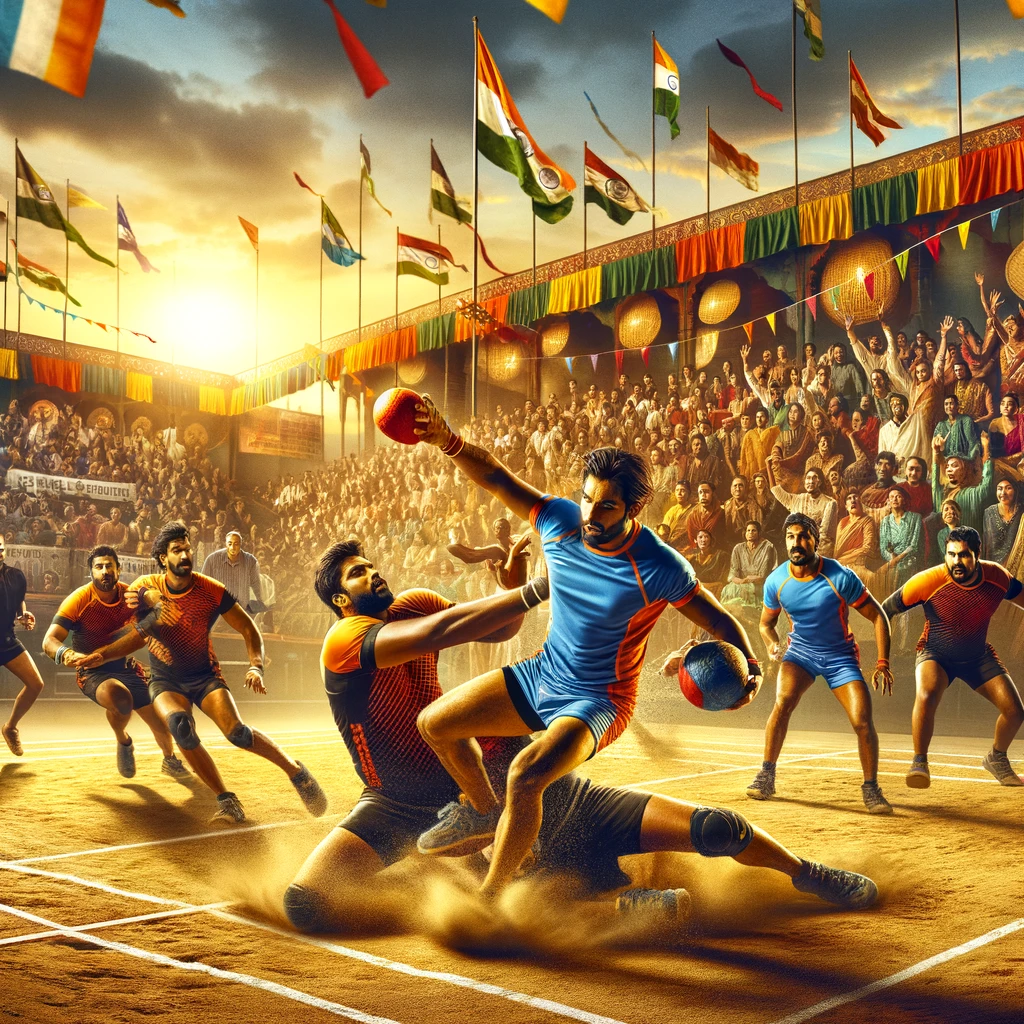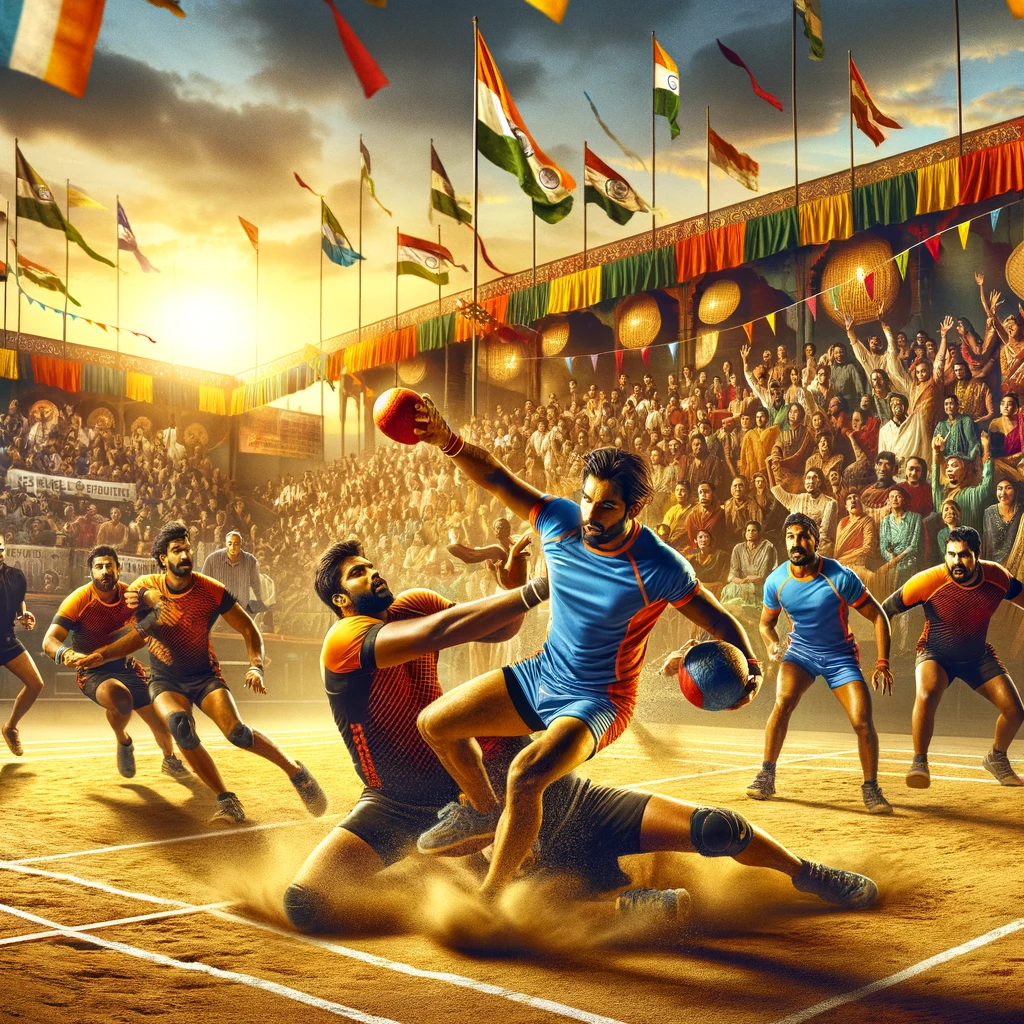Kabaddi, an enchanting and timeless sport firmly woven into the fabric of South Asian heritage, has been captivating the hearts and minds of spectators for centuries. This dynamic and physically demanding game requires its players to possess an extraordinary amalgamation of athletic prowess, razor-sharp mental acuity, and cunning strategic maneuvers. The sport’s ability to keep audiences on the edge of their seats is a testament to its enduring appeal and the exceptional skills displayed by its competitors.
Evolution of Kabaddi Rules
| Era | Rules |
|---|---|
| Ancient | Varied regionally, no standardized rules |
| Modern | Standardized rules established by governing bodies |
| Professional | Adaptations for commercial leagues, emphasis on spectator experience |
Origins of Kabaddi
The origins of Kabaddi can be traced back to ancient India, where it was played as a form of exercise and entertainment. The word “Kabaddi” is derived from the Tamil word “kai-pidi,” which translates to “holding hands.” Early versions of the game varied regionally, with different rules and formats observed across the Indian subcontinent.

Kabaddi: A Cultural Phenomenon
- Kabaddi is more than just a sport; it is an integral part of South Asian culture.
- The game was often played during festivals and gatherings, serving as a ritual and a source of entertainment.
- Kabaddi embodied the values of strength, agility, and teamwork, representing the spirit of camaraderie and competition.
- The sport’s deep cultural roots have contributed to its enduring popularity and significance in South Asian societies.
The Modernization of Kabaddi
- As society progressed, Kabaddi underwent a process of modernization to keep pace with changing times.
- Standardized rules and regulations were established to create a more structured and organized form of the game.
- Governing bodies, such as the Amateur Kabaddi Federation of India (AKFI), played a crucial role in codifying the sport and promoting its growth at the national level.
- The modernization of Kabaddi helped to streamline gameplay, enhance its appeal, and pave the way for its future growth and development.
Kabaddi’s Global Expansion
- In recent years, Kabaddi has experienced a remarkable expansion beyond its traditional South Asian boundaries.
- The sport has gained international recognition and attracted enthusiasts and players from diverse backgrounds and countries.
- Globalization has played a significant role in the spread of Kabaddi, with increased cultural exchange and the rise of digital media platforms.
- Governing bodies and organizations have made concerted efforts to promote Kabaddi on a global scale, organizing international tournaments and exhibitions.
- The global expansion of Kabaddi has helped to showcase the sport to a wider audience and foster its growth in new markets.
The Rise of Professional Kabaddi Leagues
- One of the most transformative developments in Kabaddi’s recent history has been the emergence of professional leagues.
- Leagues like the Pro Kabaddi League (PKL) in India have revolutionized the sport, turning it into a highly commercialized and spectator-friendly event.
- These professional leagues have attracted top talent from around the world, offering players a platform to showcase their skills and compete at the highest level.
- Lucrative sponsorships, media deals, and a massive fan following have propelled Kabaddi into the realm of highly profitable sports.
- The rise of professional leagues has elevated Kabaddi to unprecedented levels of popularity, with millions of viewers tuning in to watch matches and follow their favorite teams and players.
- The success of these leagues has also inspired the creation of similar professional Kabaddi competitions in other countries, further fueling the sport’s global growth.
Factors Contributing to Kabaddi’s Popularity
| Factor | Explanation |
|---|---|
| Accessibility | Minimal equipment requirements, open space play |
| Cultural Resonance | Deeply ingrained in South Asian culture |
| Fast-Paced Gameplay | Appeals to a wide audience, keeps viewers engaged |
| Globalization | Spread of Kabaddi beyond traditional boundaries |
| Professional Leagues | Elevated status, increased visibility, commercial appeal |
Analyzing Kabaddi’s Popularity
The popularity of Kabaddi can be attributed to various factors, including its simplicity, fast-paced nature, and cultural resonance. Unlike many mainstream sports, Kabaddi requires minimal equipment and can be played in any open space, making it accessible to people of all ages and backgrounds. Additionally, the sport’s emphasis on physical strength, agility, and strategy appeals to a wide audience, transcending linguistic and cultural barriers.
Kabaddi’s Future Prospects
Looking ahead, Kabaddi’s future appears promising. With the continued globalization of sports and the proliferation of digital media platforms, Kabaddi has the potential to reach even greater heights of popularity. The establishment of grassroots initiatives and development programs can further fuel the growth of Kabaddi at the grassroots level, ensuring its longevity and relevance in the ever-changing landscape of sports.
Additional Points
- Kabaddi is a contact sport that requires a combination of strength, speed, agility, and strategy.
- The sport has gained recognition as a medal event in the Asian Games, further cementing its status as a significant sport in the region.
- Women’s Kabaddi has also gained prominence, with the introduction of the Women’s Kabaddi Challenge in India and the inclusion of women’s teams in international competitions.
- Kabaddi has adapted to modern technology, with the introduction of video referrals and electronic scoring systems to enhance the accuracy and fairness of the game.
- The success of Kabaddi has inspired the development of similar sports, such as the Kabaddi Premier League in Pakistan and the Super Kabaddi League in England.
Also, People Asked
What are the basic rules of Kabaddi?
- A: Kabaddi is played between two teams of seven players each. The objective is to score points by having a “raider” enter the opponent’s half, tag as many defenders as possible, and return to their own half without being tackled. The defending team scores points by successfully tackling the raider.
How has the Pro Kabaddi League impacted the sport’s popularity?
- A: The Pro Kabaddi League has significantly boosted the sport’s popularity by providing a platform for top players to showcase their skills, attracting large audiences, and generating substantial revenue through sponsorships and media rights.
Is Kabaddi an Olympic sport?
- A: As of now, Kabaddi is not an Olympic sport. However, with its growing global popularity and the efforts of governing bodies to promote the sport, there is potential for Kabaddi to be considered for inclusion in future Olympic Games.
What are the physical requirements to excel in Kabaddi?
- A: Kabaddi players need a combination of physical attributes, including strength, speed, agility, endurance, and flexibility. They must possess good lung capacity, as the game involves holding one’s breath while raiding. Additionally, mental toughness and quick decision-making skills are crucial.
How can someone get involved in playing Kabaddi?
- A: To get involved in playing Kabaddi, one can start by joining local Kabaddi clubs or academies that offer training and guidance. Many schools and universities also have Kabaddi teams or intramural leagues. As the sport continues to grow, there may be increasing opportunities to participate in amateur or professional competitions.


